2020 Ford Escape Hybrid vs. 2019 Toyota RAV4 Hybrid: Which Fuel-Sipping Compact Crossover Is Better?
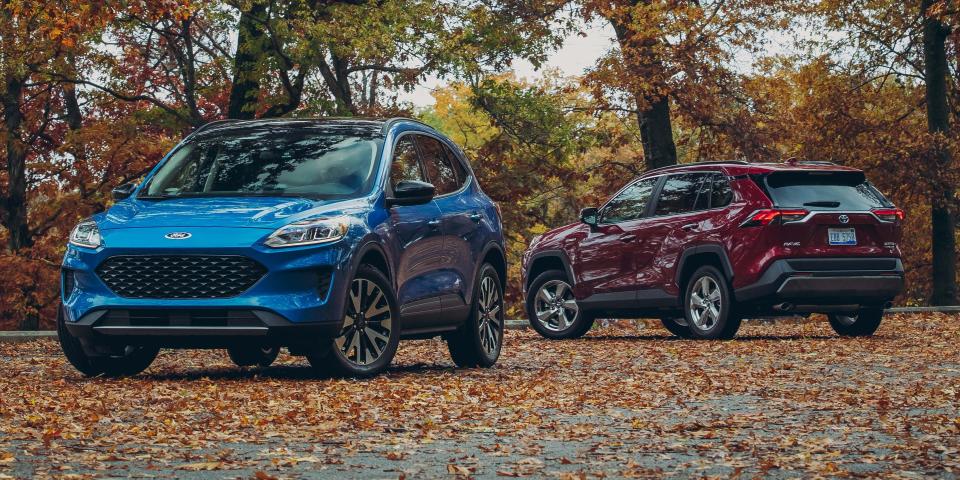

This electrifying comparison features two of the best-selling SUV nameplates in the United States, competing in what is arguably the most popular market segment. Yes, the Ford Escape hybrid versus the Toyota RAV4 hybrid is more than a battle of fuel-conscious compact crossovers. It's new versus even newer, subdued styling versus in-your-face design, Ford versus Toyota, America versus Japan.
Pardon the hyperbole. Diving into the hybridized Escape and RAV4 may be as exciting as shopping for appliances, but they're hugely popular with shoppers and highly profitable to their makers. Likewise, they're currently the only hybrid options in their class—apart from the Mitsubishi Outlander PHEV—so we pitted them against each other to see which is better at sipping fuel and shipping families.
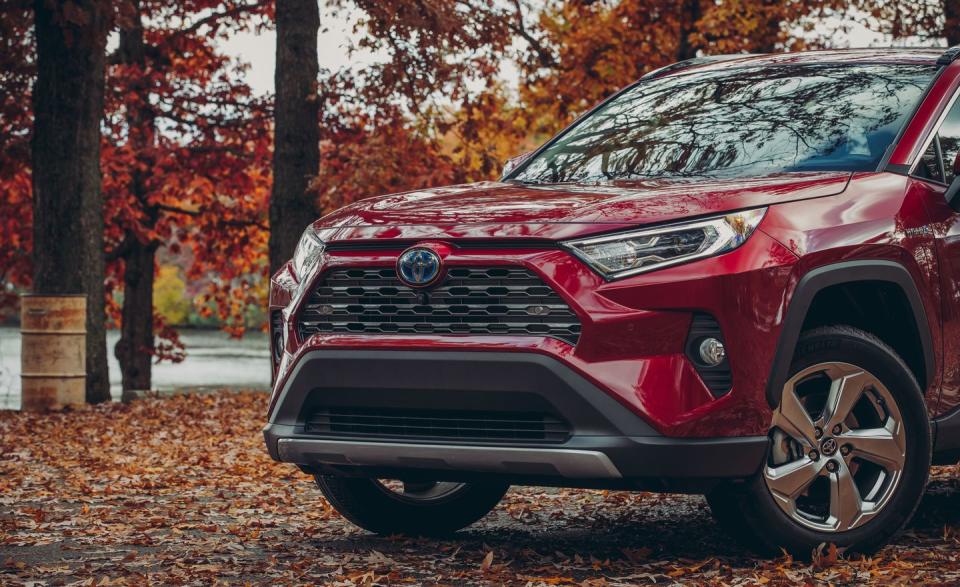
The Matchup
Ford laid the groundwork for the hybrid compact SUV with the original Escape, but it hasn't offered the technology in this space since the second generation went away in 2012. That changed with the introduction of the all-new 2020 Escape, which boasts more carlike qualities. It also marks the return of a hybrid and introduces a plug-in hybrid. Our initial impressions of the plug-less Escape hybrid revealed it as arguably the best Escape to wear the badge. For this comparison, we tested a SE Sport hybrid wearing Velocity Blue Metallic paint. The front-drive version starts at $29,450 and includes many desirable standard features, but our tester totaled $34,345, including the $1500 all-wheel-drive option and the $3395 Premium package, which adds larger 19-inch wheels (17s are standard), adaptive cruise control, a panoramic sunroof, a power-operated liftgate, and more.
Toyota not only created the compact crossover with the first-gen RAV4, it also brought hybrid propulsion into the mainstream with its innovative Prius. While the company only started combining these two pioneers a few years ago, the new 2019 RAV4 hybrid is conceivably better than the conventional version. Our Ruby Flare Pearl tester is a top-of-the-line Limited model with more than $4000 in options. The most notable upgrades include an 11-speaker JBL audio system, adaptive headlights, heated and ventilated front seats, heated rear seats, wireless charging, and a surround-view camera system. Although this content makes it the most luxurious RAV4 hybrid, its $41,088 as-tested price means it costs about $11K more than the cheapest one.
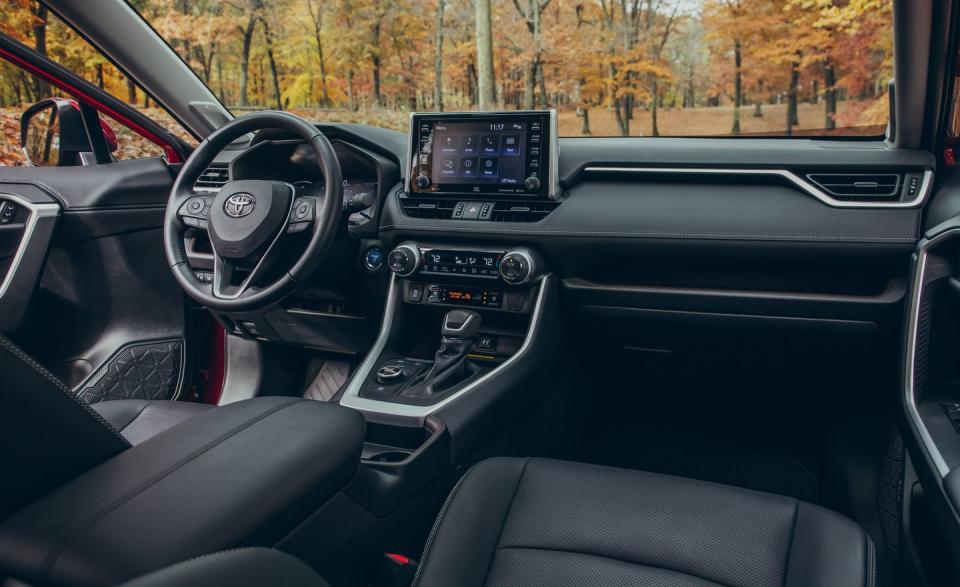
On the Road
At the heart of every great hybrid is a smooth and refined gasoline-electric powertrain. The Escape is powered by a 2.5-liter Atkinson-cycle inline-four and two motor/generators that combine for 200 horsepower. This setup pairs with a planetary gearset that mimics a traditional transmission, but it's actually an electronic continuously variable automatic (CVT). The RAV4 uses a 2.5-liter inline-four paired with Toyota’s Hybrid Synergy Drive. However, an additional electric motor is mounted on the rear axle, which creates all-wheel drive and a combined output of 219 horses; the Ford's all-wheel-drive system is of the conventional mechanical variety. While both hybrids seamlessly transition between internal-combustion and electric power, the Toyota's engine is noisier than the Ford's, and slight throttle inputs rouse it to action with greater regularity. The torquier RAV4 is more responsive at city speeds and scooted from zero to 60 mph in a respectable 7.3 seconds—0.4 second quicker than its rival. Still, the Escape provides better passing power, accelerating more quickly from both 30 to 50 and 50 to 70 mph. As an aside, Ford has yet to release full details for its upcoming Escape plug-in hybrid, but the new 2021 RAV4 PHEV should pack a sizeable wallop with its combined 302-hp rating.
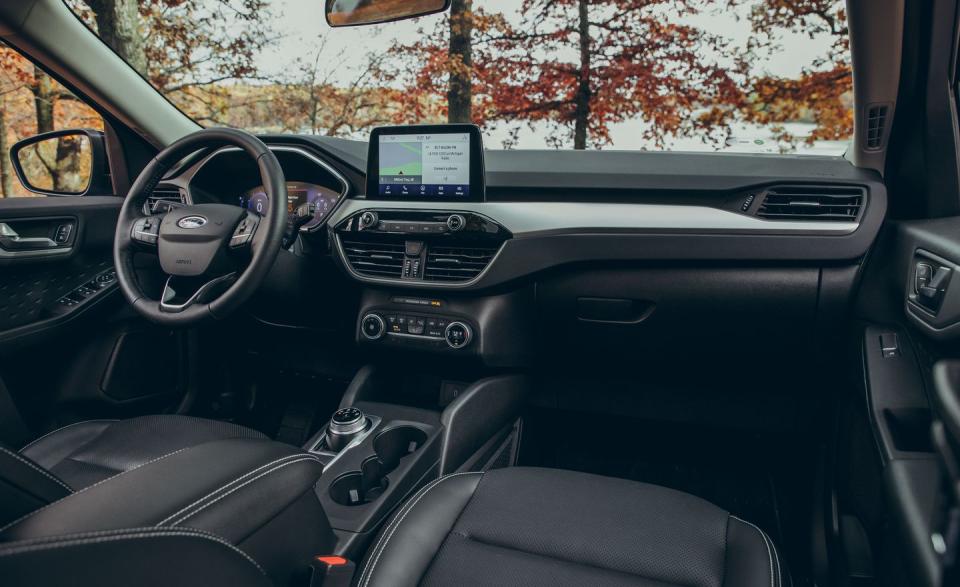
Of course, the most important metric to any hybrid owner is fuel economy. The EPA gives the electrically assisted Escape and RAV4 almost identical estimates. Both carry 40-mpg combined ratings, but the Ford has a higher city estimate (43 mpg versus 41), and the Toyota has a higher highway rating (38 mpg versus 37). For context, the thriftiest non-hybrid Escape is rated at 27 mpg city, 33 highway, and 30 combined. The RAV4 equivalent tops out at 26 mpg city, 35 highway, and 30 combined. Regardless of badging, these hybrids should spend less time at the pump than their gas-only counterparts. In our mixed driving, we averaged 32 mpg in the Toyota and 30 mpg in the Ford.
While neither of these crossovers are particularly engaging to pilot, the Escape feels more sophisticated and easier to control. Its soft suspension soaks up bumps, and its cabin mutes outside noise quite well. The RAV4 feels more like a legitimate SUV, thanks in part to its much higher seating position and 8.1 inches of ground clearance. It also can tow up to 1750 pounds, which is a tad more than the Escape hybrid's 1500-pound maximum. The tradeoff for the Toyota's greater capability is a flintier ride on uneven roads and a softer brake pedal that had inconsistent feedback compared with the Ford. The RAV4 hybrid also needed an extra 15 feet to stop from 70 mph at the test track, managing the feat in a so-so 182 feet.
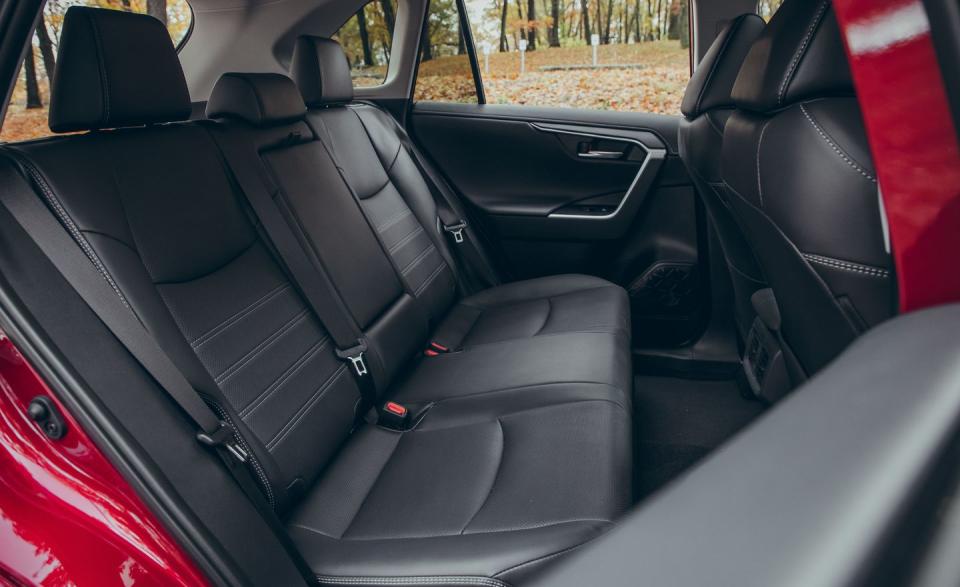
The Inside View
Inside, the RAV4 hides its hard plastics better than the Escape, and its design is more functional and handsome. The view out the back of the Toyota also is clearer thanks to smaller blind spots. While its front seats are highly adjustable and supportive, the Ford has comfier and wider cushions as well as an excellent driving position and generous legroom. The back seat is a little roomier in the RAV4, but it lacks the reclining and sliding functions that make the Escape's aft quarters more accommodating. However, since the Ford's 1.1-kWh battery pack is located under its rear bench, it reduces rear legroom and cargo space. That gives the Toyota an advantage in terms of outright volume and luggage storage.
Every Escape hybrid is bolstered by ample standard features that diminish some of the extra-cost equipment found on the RAV4. For several thousands of dollars less, our Escape SE Sport hybrid came with a 12.3-inch digital gauge cluster, a power-adjustable driver's seat, and heated front seats. Both vehicles include a touchscreen infotainment system with Apple CarPlay and a Wi-Fi hotspot. However, Ford's Sync 3 interface is easier to operate and also includes Android Auto. (The RAV4 adds Android connectivity as standard for the 2020 model year.) The Toyota we tested also featured more driver-assistance technology, contributing to its higher price. Still, adaptative cruise control, automated emergency braking, blind-spot monitoring, and lane-keeping assist are present on both rosters.
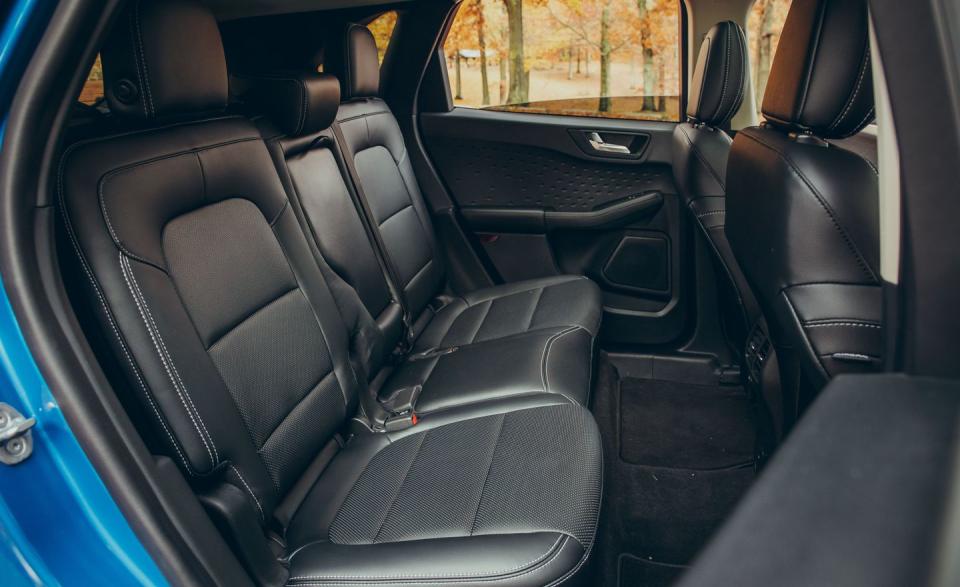
The Bottom Line
So, which one of these two well-established compact crossovers is the better hybrid? We're pretty convinced both are the best versions in their respective lineups. The RAV4 hybrid appears like the more popular choice due to crossover shoppers' appetite for traditional SUV characteristics such as all-wheel drive, bold styling, and a raised driving position. The Toyota checks all these boxes and brings along the company's reputation for reliability, which help make the RAV4 one of the best-selling models in America. However, the hybrid's relatively loud engine and jittery ride combined with its generally more expensive price tag make it a close second in this comparison.
The outgoing Ford Escape sold in droves even though it was older than most rivals, and the latest version is much improved. The 2020 Escape hybrid is a perfect portal to transition from small, fuel-efficient cars to compact crossovers. Sure, its interior won't impress anyone, and it's not as efficient on the highway as the RAV4 hybrid, but the Ford has a cozier cabin and more refined driving manners. It's also a considerably better value proposition. After all, why buy a hybrid if you're not attempting to save the environment and some money?
You Might Also Like

 Yahoo Autos
Yahoo Autos 